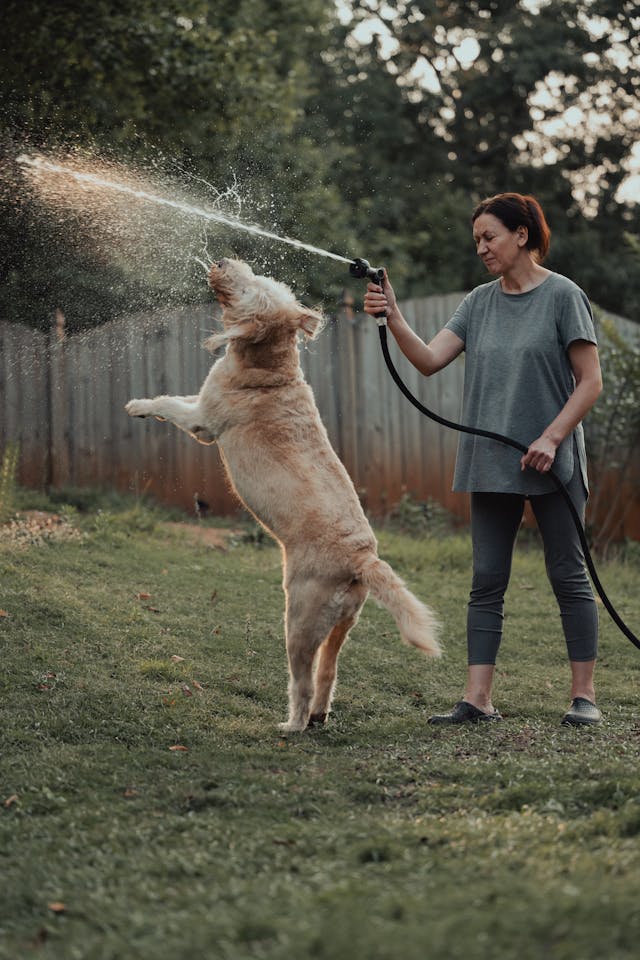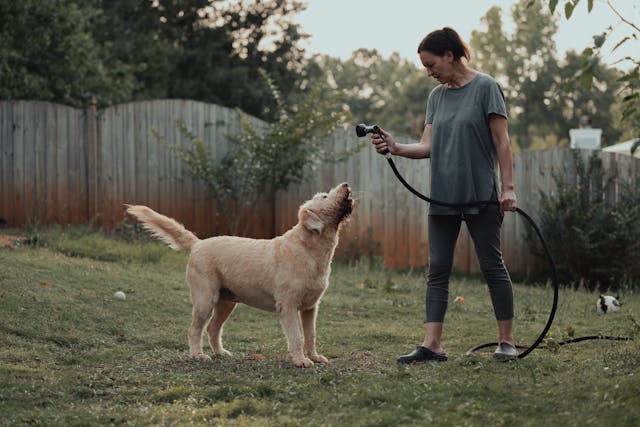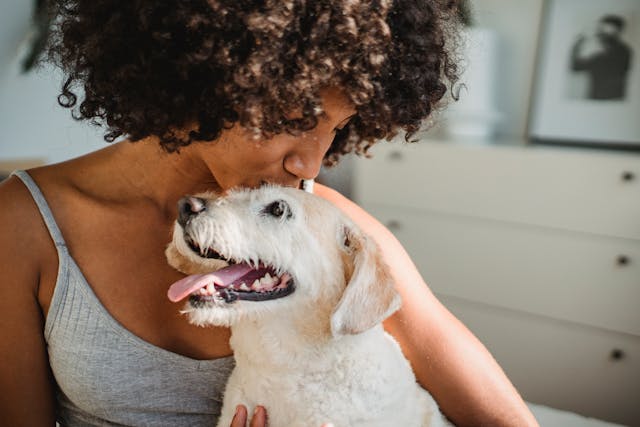Benefits of Labradoodles in Therapy and Service Roles
The Benefits of Labradoodles in Therapy and Service Roles From my firsthand experience with support animals, stand out as truly invaluable companions. Their ability to excel in both therapy and service work is tied to their naturally gentle temperament, high intelligence, and remarkable trainability. These dogs don’t just serve—they connect. Whether supporting a child with emotional needs or aiding an adult with mobility challenges, Labradoodles bring real comfort and reliability. In one case I observed, a Labradoodle quickly adapted to a hospital setting, offering both physical help and emotional grounding to patients. It’s clear that their qualities make them an ideal match for such roles.
Unlike many other breeds, Labradoodles are equally beloved in the family setting and professional support environments. They’re not just pets—they’re partners. As this article highlights, they provide a combination of emotional warmth and practical support that is rare. Over the years, their reputation has been proven through consistent performance in various therapeutic and assistance capacities. What truly makes them unique is how naturally they take on responsibility—it’s not just something they can be trained to do; it’s something they seem born to do. The more I explore this field, the more I see why Labradoodles make such effective and trusted companions in these critical roles.
Table of Contents

Are Labradoodles good therapy dogs?
Yes, Labradoodles are excellent therapy dogs due to their friendly, gentle, and intelligent nature. They are highly trainable and often used in hospitals, nursing homes, and schools to provide emotional support and comfort to people in need.
Characteristics That Make Labradoodles Ideal
Working closely with therapy and service animals has shown me just how exceptional Labradoodles can be. Their unique traits are what make them perfect for support roles. Thanks to their high intelligence, inherited from both Labrador Retrievers and Poodles, they are quick learners. Combined with their strong trainability and natural eagerness to work with handlers, training them becomes smooth and rewarding. Their gentle temperament shines through their friendly, calm, and patient nature, making them dependable partners in sensitive environments.
What also stands out is their amazing adaptability. They can adjust well to various environments and situations, whether it’s a care facility or a family home. Many have a hypoallergenic coat, so their coats are less likely to trigger allergies, which makes them more suitable for a broader range of people. The size variety allows them to be matched to specific needs, which is a big plus when choosing a dog for certain tasks.
Their energy level is well-balanced—they’re playful when it’s time to engage and calm when it’s time to focus. As Dr. Emily Thompson, a respected canine behaviorist specializing in therapy dogs, says, it’s their steady demeanor, impressive versatility, and thoughtful responses that help them truly excel in supportive roles.
Roles and Responsibilities of Therapy Dogs
Having worked closely with therapy animals, I’ve seen how Therapy Labradoodles bring joy, calm, and emotional support into people’s lives. Their ability to reduce anxiety, lower blood pressure, and even help with pain management makes them more than just comforting companions—they are silent healers. Whether they visit patients in hospitals to ease stress, or walk quietly beside elderly residents in nursing homes to ease loneliness, these dogs intuitively sense when someone needs extra comfort. One of the most beautiful moments I witnessed was in a mental health facility, where a young patient began to open up during a therapy session, simply because a certified therapy dog handler named Lisa Chen brought in her gentle Labradoodle.
These dogs are also found in schools, supporting students through reading programs or emotional challenges. During disaster response, they offer steady companionship to individuals recovering from traumatic events and natural disasters. Their quiet presence in these intense settings creates a space where healing can begin. From children learning to read to those affected by crisis, Labradoodles assist, support, and significantly improve emotional health for those in need. Their role is not just a service—it’s a lifeline.

Roles and Responsibilities of Service Dogs
From my years working alongside support animals, I’ve seen how Labradoodles transform lives, especially in service roles. Their intelligence, calmness, and ability to bond deeply with humans make them perfect for helping those with disabilities. Whether guiding the visually impaired through daily routines or offering stability to someone with mobility challenges, these dogs are far more than companions — they’re lifelines. A well-trained Guide Dog leads with confidence, and a Hearing Dog can swiftly alert their handler to important sounds, like a doorbell or smoke alarm, ensuring safety and freedom.
Labradoodles are also trusted as Medical Alert Dogs, trained to recognize seizures or low blood sugar episodes before they become dangerous. I’ve personally worked with a family whose Labradoodle helped their child manage unpredictable diabetic crashes. It was life-changing. Some Labradoodles become Psychiatric Service Dogs, helping with mental health conditions by offering grounding during anxiety attacks. Their work enhances independence, quality of life, and emotional security. Their adaptability allows them to learn a wide range of specific tasks, from retrieving objects to giving gentle nudges for balance — each role tailored to their handler’s needs.
Training Needs for Therapy and Service Dogs
Training a Labradoodle for therapy or service work takes time and dedication. These dogs must master basic obedience such as sit, stay, come, and heel. They also need socialization, meaning they should be exposed to different environments, people, and animals to ensure they remain calm in any situation. To cater to a specific handler’s needs, specialized task training is necessary. In addition, public access training ensures they behave appropriately in public spaces.
Most importantly, ongoing training and reinforcement are key to maintaining the dog’s skills throughout their careers. With the right certification programs, these Labradoodles are trained to provide the best possible support for those in need, typically taking 1-2 years for service dogs to be fully trained, while therapy dogs can complete their training in several months.
Success Stories and Case Studies
Labradoodles have made an incredible difference in the lives of many individuals through their work as therapy and service dogs. Bella, known as the Hospital Hero, has spent over 1,000 hours visiting patients in children’s hospitals, offering comfort and bringing smiles to those battling serious illnesses. Similarly, Max, the Mobility Miracle, helps his owner, a veteran with a spinal cord injury, by retrieving items, opening doors, and providing balance support. These examples highlight the vital roles Labradoodles play in improving the lives of their handlers.
In other settings, Luna, the Classroom Companion, works in an elementary school, assisting children with reading difficulties and boosting their confidence. Then there’s Charlie, the PTSD Partner, who helps his owner manage the symptoms of PTSD, providing a calming presence during anxiety attacks and nightmares. Stories like these, shared by experts such as Sarah Johnson, a psychologist, show the deep bond between Labradoodles and the people they help, underscoring the profound benefits these dogs bring to those they serve.

What are the benefits of dogs as service animals?
Service dogs help individuals with disabilities by performing essential tasks such as guiding the visually impaired, assisting with mobility, providing medical alerts, and supporting mental health. They offer increased independence, safety, and emotional well-being for their handlers.
What is the purpose of the Labradoodle?
The Labradoodle was initially bred as a hypoallergenic service dog, combining the intelligence and trainability of a Labrador Retriever with the low-shedding coat of a Poodle. Their purpose is to serve as both a loving companion and an effective service dog for various needs, including therapy, guiding, and medical assistance.
What is the role of a therapy dog?
The role of a therapy dog is to provide emotional support and comfort to individuals in need, such as patients in hospitals, children in schools, or people experiencing mental health challenges. Therapy dogs help reduce stress, anxiety, and provide companionship to enhance overall well-being.

Final Thought
Labradoodles are truly remarkable animals that excel in therapy and service roles. With their intelligence, gentle nature, and high trainability, they are perfectly suited to provide invaluable support to individuals in need. Whether they are assisting those with disabilities, offering emotional comfort in hospitals, or providing mental health support, Labradoodles continually prove their worth.
At Snowy River Labradoodle, we focus on breeding dogs with the ideal temperament and intelligence to ensure they can thrive in these important roles. If you’re interested in raising a Labradoodle for therapy or service work, contact us to learn more about our breeding program and how we can help you find the perfect puppy to become an exceptional therapy or service dog, making a real difference in people’s lives.
F2b Labradoodle Info & Details and Cute Images
Nutrition Myths and Facts for Labradoodles Clarifications in 2025
3 Best Shampoo for Labradoodle: Keep Your Pup Happy and Healthy

